How to Create a Workflow?
Workflows can be efficient in analyzing the progress and finishing the tasks, checklists, and deadlines on time. Maintenance of processes can be effortlessly handled without wastage of time and energy which can then be consumed on high-value tasks.
To Create a Workflow:
1. Go to gear icon in the upper right corner, select “Forms, Workflows & Template”

2. Go to the Workflows section and click on “Workflows”.
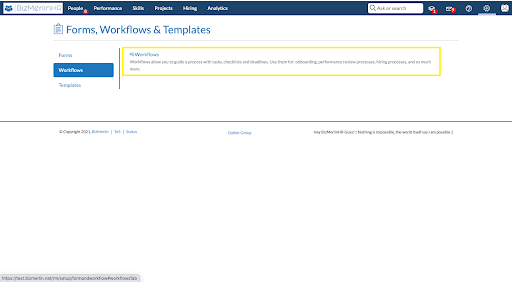
3. To create a new workflow, click on the “New Workflow” button.
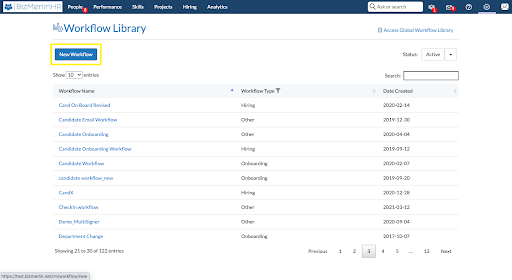
4. Fill in the details of the workflow:
a) Give in the “Workflow Name” and select the “Purpose” of the workflow. Purpose basically defines if a workflow is either a User Type workflow (Onboarding/Offboarding/Other) or a Candidate Type workflow (Hiring).
b) Add a workflow shortcut in the employee’s Admin section. To have this functionality, turn the toggle on for “Add the workflow as a link in the employee’s Admin section”.
c) Control the visibility of workflow for the user to whom the workflow is assigned from the “Visibility to User” toggle. Hidden will not allow the user to view only the tasks and not get any further notifications regarding the Workflow.
d) Select an “Owner Group” (or a User Group) to limit the access for managing the respective workflow. The users in the selected owner group should have the “Setup Menu Access” and “Workflow Management (User/Candidate)” permissions.
For example, if “HR” is selected as the owner group for the “New Employee Workflow”. Only the users of the “HR” user group and the Site-Admin will have access to manage all the particulars of this workflow.
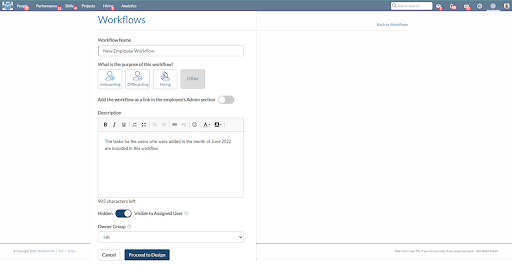
5. By clicking on the “Proceed to Design” button, a basic workflow is created, along with a sample phase and sample step in it.
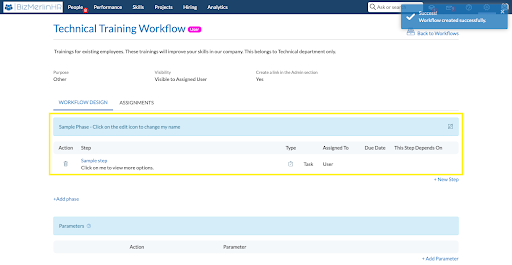
6. Edit the phase by clicking on the edit icon on the right-side corner of the Sample Phase.
7. Edit the name for the phase and proceed with “Save Phase”. The “Advanced Settings” are not mandatory and are to facilitate creating a phase for specific user groups.
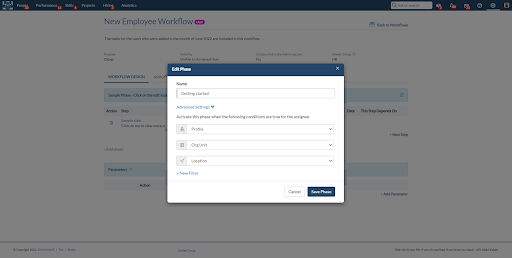
8. Similarly, edit the “Sample Step” according to the requirement and save the step.

9. “+Add Phase” and “+New Step” can be used to create further phases and steps respectively.
Once all the tasks have been included, the workflow is now ready to be assigned to the Users/Candidates.










